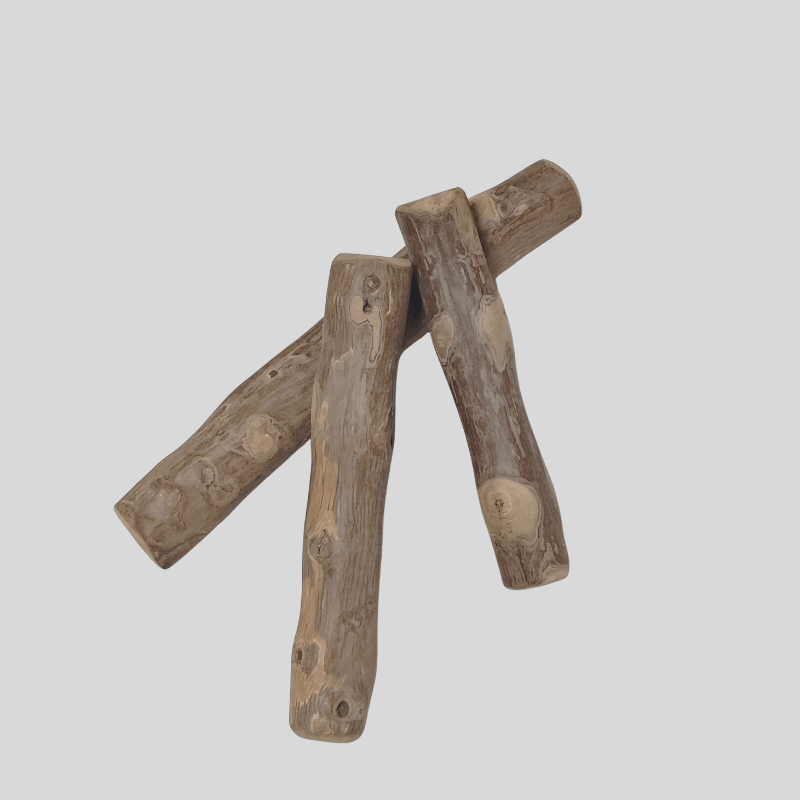If you’re a dog parent with a power chewer, chances are you’ve tried Himalayan Yak chews. They’re praised for their toughness—but are they truly safe for your dog?
In this article, we’ll explore the pros and cons of Himalayan dog treats, and why many pet owners are now switching to Coffee Wood Chews as a safer, gentler alternative.
The Truth About Himalayan Dog Treats
What are they?
Himalayan chews are made from hardened yak or cow’s milk, lime, and salt. Unlike rawhide, they’re fully digestible and long-lasting—making them popular among heavy chewers.
But here’s the catch:
Too Hard for Comfort
Fresh out of the package, these chews can be extremely hard. This density can:
- Crack or fracture teeth, especially molars
- Cut gums with sharp, jagged edges
- Result in painful injuries and expensive vet bills
⚠️Choking & Digestive Risks
As they soften, chunks can break off. If swallowed:
- They may lodge in the throat or digestive tract
- The risk is especially high for dogs who gulp instead of chew
Hidden Health Concerns
- High Sodium – Not ideal for dogs with kidney or heart conditions
- High Calories – Not suitable for dogs on weight management plans
Constant Supervision Required
As the chew gets smaller, it becomes a choking hazard. Some owners microwave the last bit to puff it up—but this can change the texture and pose a burn risk.
Why Coffee Wood Chews Are a Smarter, Safer Choice
Made from the dense core of the coffee tree, Coffee Wood Chews offer a durable yet safer alternative for strong chewers.
Tough, But Not Tooth-Breaking
Hard enough to satisfy aggressive chewers, but soft enough to avoid dental damage. The fibrous texture allows dogs to gnaw deeply without risking fractured teeth—great for dogs with sensitive mouths.
No Sharp Shards
Unlike sticks or bones, coffee wood wears down into soft fibers—not dangerous splinters. This means lower choking and injury risks.
No Salt, No Calories, No Additives
- 100% natural, untreated coffee wood
- No added sodium
- Zero calories
- Hypoallergenic and gentle on sensitive stomachs
Eco-Friendly Bonus
Harvested from sustainably trimmed coffee branches—good for your dog and the planet.
Quick Safety Comparison Table
| Feature | Himalayan Chews | Coffee Wood Chews |
|---|---|---|
| Hardness | Extremely hard – fracture risk | Tough but pressure-yielding |
| Breakdown | Breaks into hard chunks | Wears into soft fibers |
| Choking Risk | High, especially when small | Low to moderate |
| Calories | High | None |
| Salt Content | High | None |
| Ingredients | Milk, lime, salt | 100% natural wood |
| Best For | Moderate chewers, with supervision | Power chewers, sensitive mouths |
Tips for Using Coffee Wood Chews Safely
Even the safest chew requires smart use:
- Choose the right size: Match the chew to your dog’s size and chewing strength.
- Monitor during first use: See how your dog interacts.
- Replace when small: Discard when it becomes a choking risk.
- Use for enrichment: Great for managing boredom, anxiety, or paw-licking behavior.
The Bottom Line: Safety Without Sacrificing Satisfaction
Are Himalayan chews safe?
Sometimes. They’re digestible but can still pose serious risks—especially for aggressive chewers or when unsupervised.
Coffee Wood Chews offer a better balance: strong enough to satisfy, gentle enough to protect dental and digestive health. No salt, no calories, no splinters—just a safe, satisfying chew your dog will love and your vet will approve of.
Give your dog a safer chew—and give yourself peace of mind.

4PACK-Coffee Stick For Dogs

